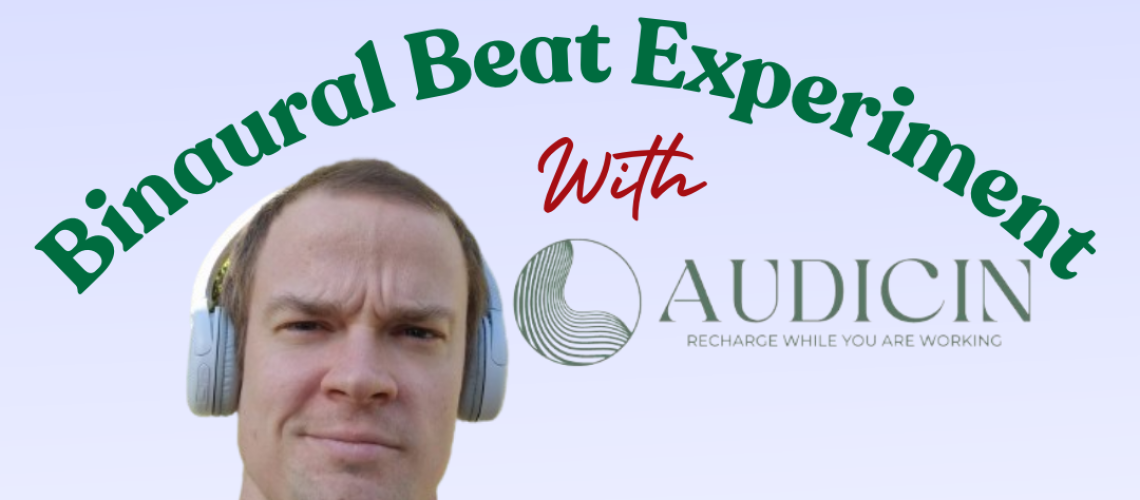I received the Audicin app free of charge & this post contains a discount code
Over the past ten years, I have used sound to influence my physical and mental state, from the soothing rhythms of relaxing music to the energizing power of motivational speeches.
This year, the world of binaural beats captured my curiosity.
In this blog post, I’m excited to share relevant binaural beat insights from scientific studies and, most importantly, the results of my N=1 experiment with Audicin.
Table of Contents
1. The Science Behind Binaural Beats
Before delving into my N=1 experiment, it is essential to have a comprehensive overview of the binaural beat (BB) science.
Let’s start with the basics of binaural beats:
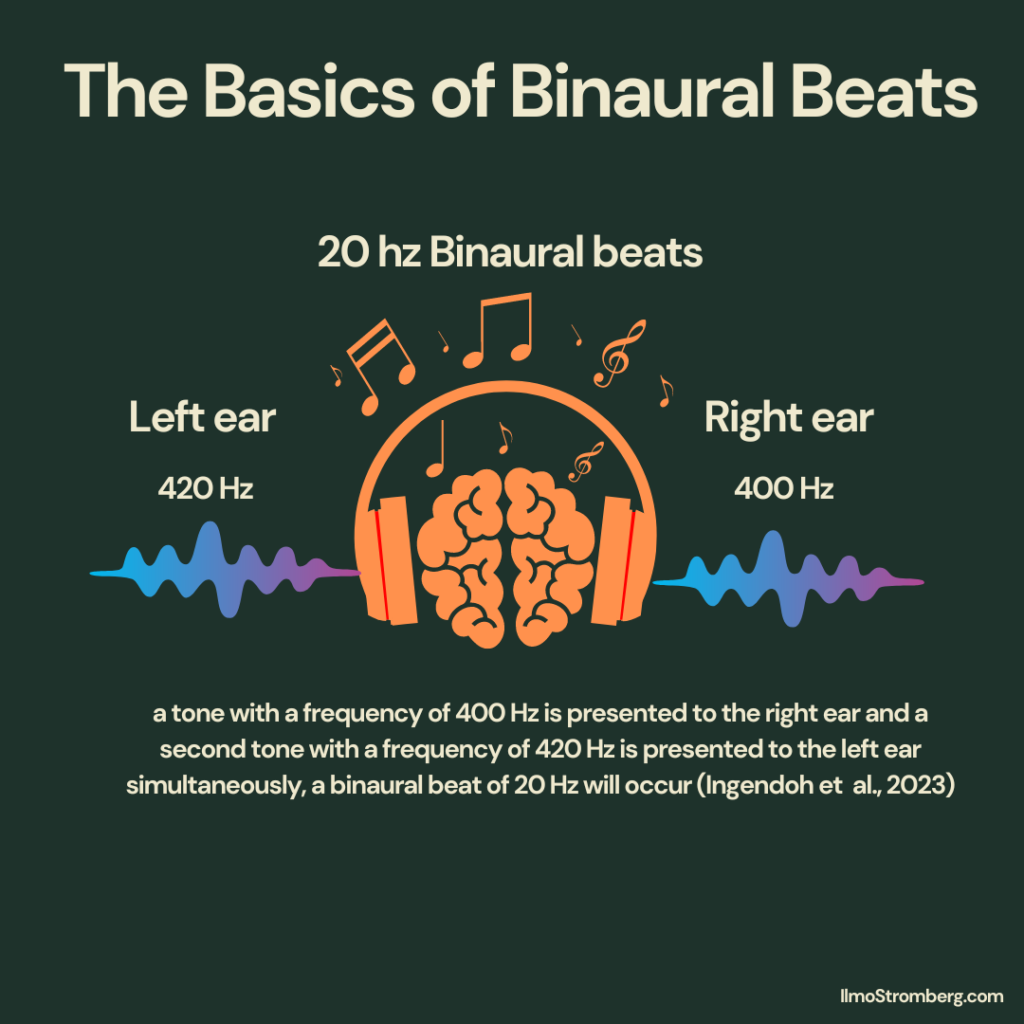
The picture above illustrates one example. Binaural Beats are detectable within a frequency range of approximately 1-30 Hz, aligning with human EEG’s primary frequency bands. [1]
Interest in binaural beats has increased from both a consumer and scientific perspective, with more studies published each year:
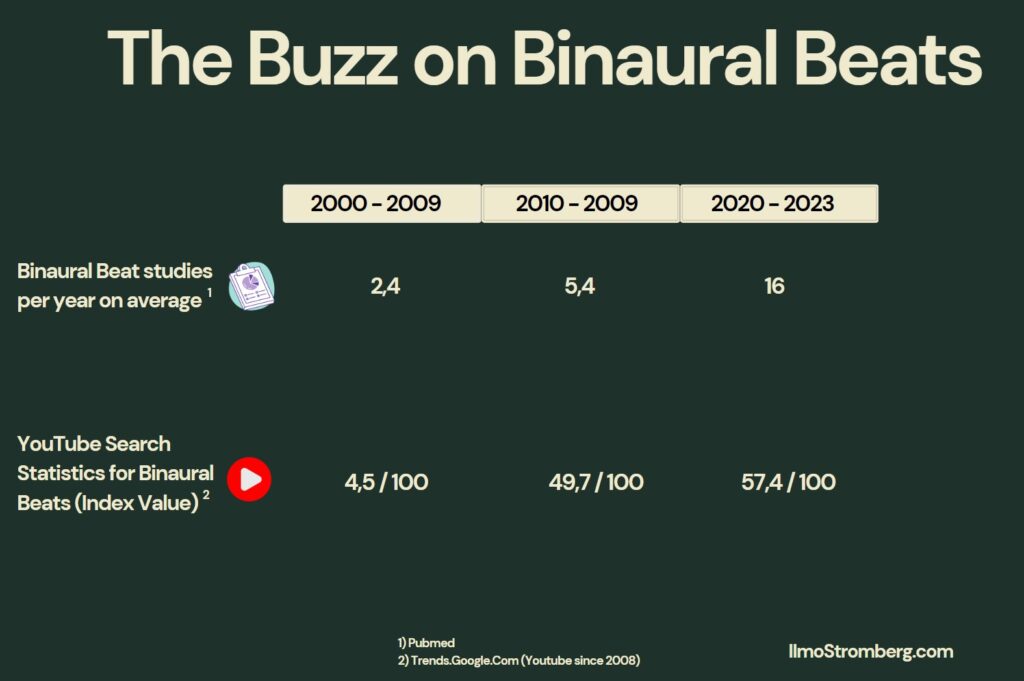
There are fewer than ten meta-analyses or systematic reviews on binaural beats. Here, I highlight the four most relevant ones:

It is fascinating that binaural beats can enhance cognitive performance and alleviate pain and anxiety. This is particularly noteworthy given their low or no-cost nature and the fact that they require no additional time.
That said, there’s still a need for more high-quality studies, as highlighted in meta-analysis number three, and to understand better the effects of BBs on brain activity, highlighted in number four.
There is a great variety in the conditions used for control groups, ranging from blank tapes to relaxing music and white noise. Similarly in the experiment group, it can be pure binauraul beats or binaural beat with additional sounds.
One way to investigate the effectiveness of binaural beats is to use inaudible binaural beats. Two individual studies have shown promising results in this area. [2][3]
Aside from the meta-analyses, I found these four studies most interesting:

There are possible use cases for BBs to improve sleep quality, HRV, and depression and to hasten post-exercise recovery.
Study number four highlights important nuances; for some people, BBs work better than others. In this case, students with high baseline trait anxiety experienced a marginally significant reduction in anxiety and an increase in HRV compared to those with normal trait anxiety. [4]
In 2023, the prestigious journal Nature published a study showing the negative reverse effect of binaural beats on cognitive processes. Critics of BBs have highlighted this study, but there are problems with the study. [5]

In the study they used only pure binaural beats (15 hz), you can listen the actual track here [6]. It sounds horrendous, totally different from Audicin or tracks that I have been using on YouTube.
In the introduction, they also mention binaural beats being potentially dangerous to hearing and mental health. In the hearing section, they cite a small review paper from 2012, a time before there were single meta-analyses about BBs [7].
Overall, the review paper have a skeptical view on binaural beats, stating the benefits being unsubstantiated.
They also use the word “Digital drug” when referring to binaural beats.
Twelve years later, we have seen countless studies showing the positive benefits of Binaural beats, so it’s hard to believe someone would publish an equivalent review paper in 2024.
However, we still need to better understand the mechanisms behind these benefits and determine the optimal protocols to maximize them.
2. My Experiment with Audicin Binaural Beats
Many companies offer binaural beats, and you can also listen to them on YouTube for free. Here are a few reasons why Audicin captured my attention:
· I liked their “recharge while you are working” slogan.
· The co-founder is Dr. Victoria Williamson, a researcher and scientist specializing in the impact of music on the mind and body, with 30 peer-reviewed research articles published.
· The co-founder of Oura, Petteri Lahtela, is an investor and advisor for Audicin.
· Audicin combines binaural beats and specially composed musical sounds in a 360-degree surround sound experience.
Experiment Design
The experiment was divided into two parts. In the first part, I used Audicin for 30 minutes before sleep to enhance recovery. In the second part, I used Audicin in the morning and during the day to improve productivity and cognitive performance.
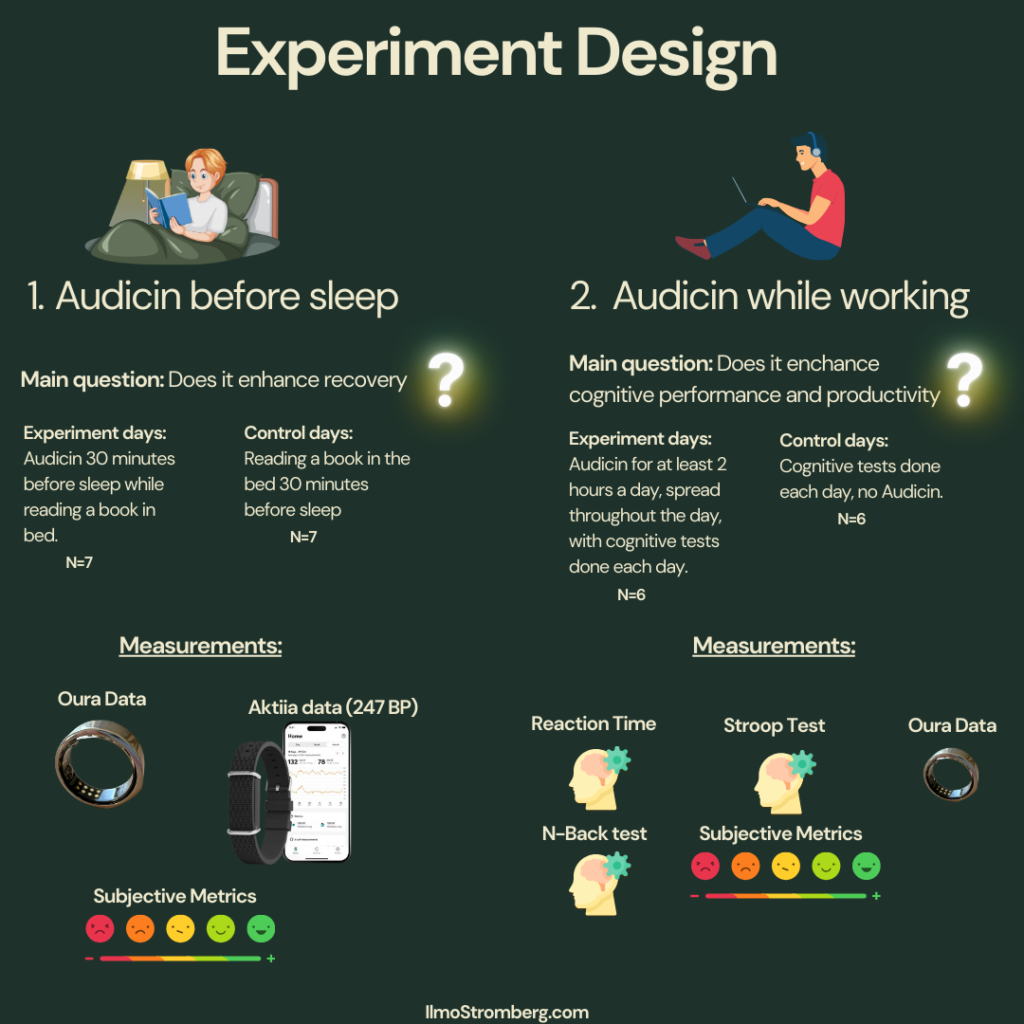
In the Audicin before sleep part, I used a playlist curated for relaxation and sleep that included theta and delta waves:
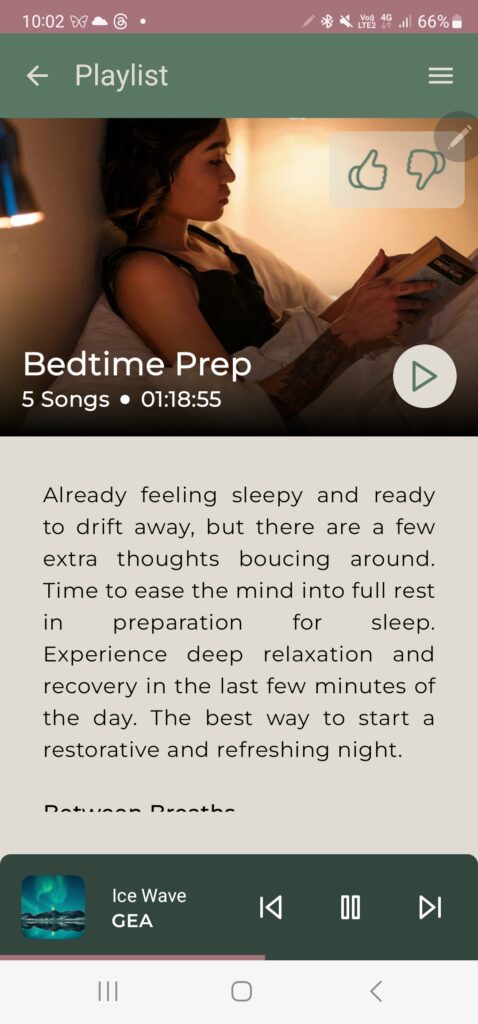
Here is an overview of the results for part one:
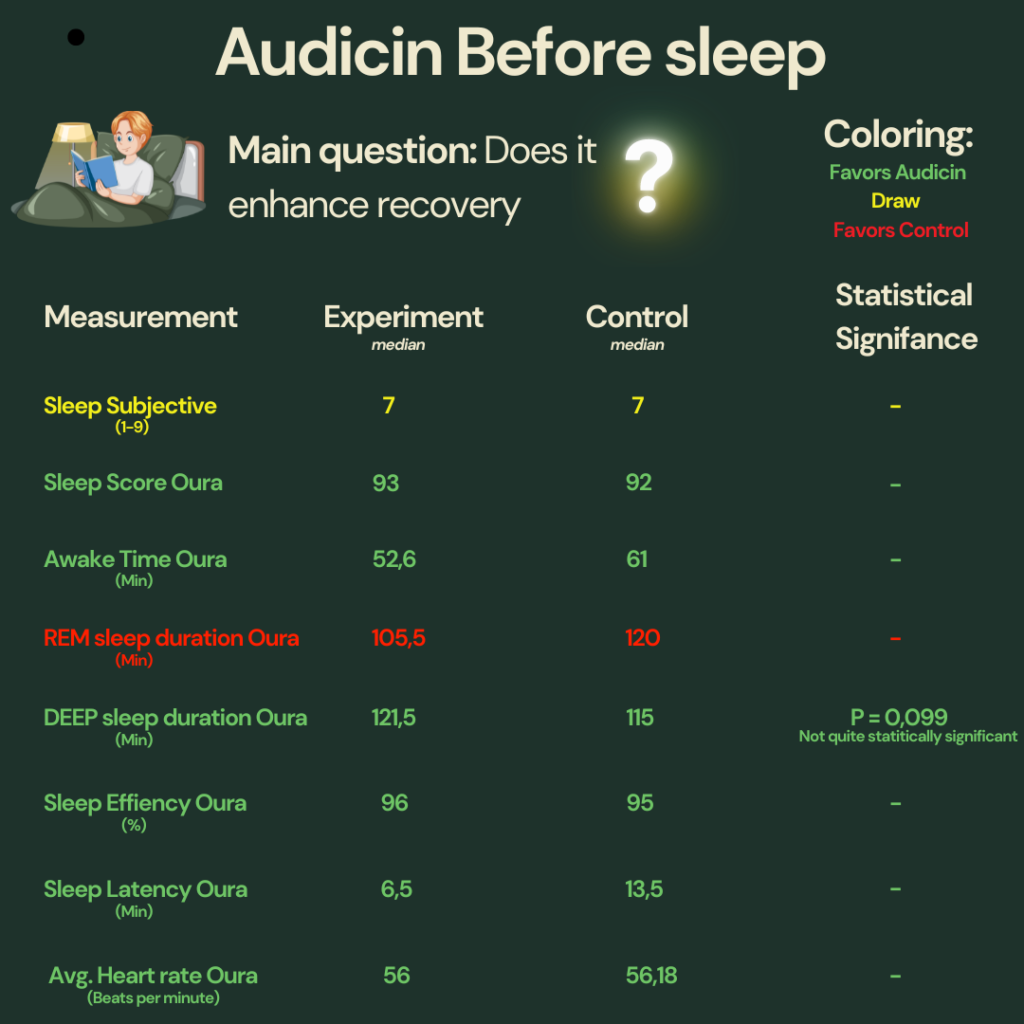
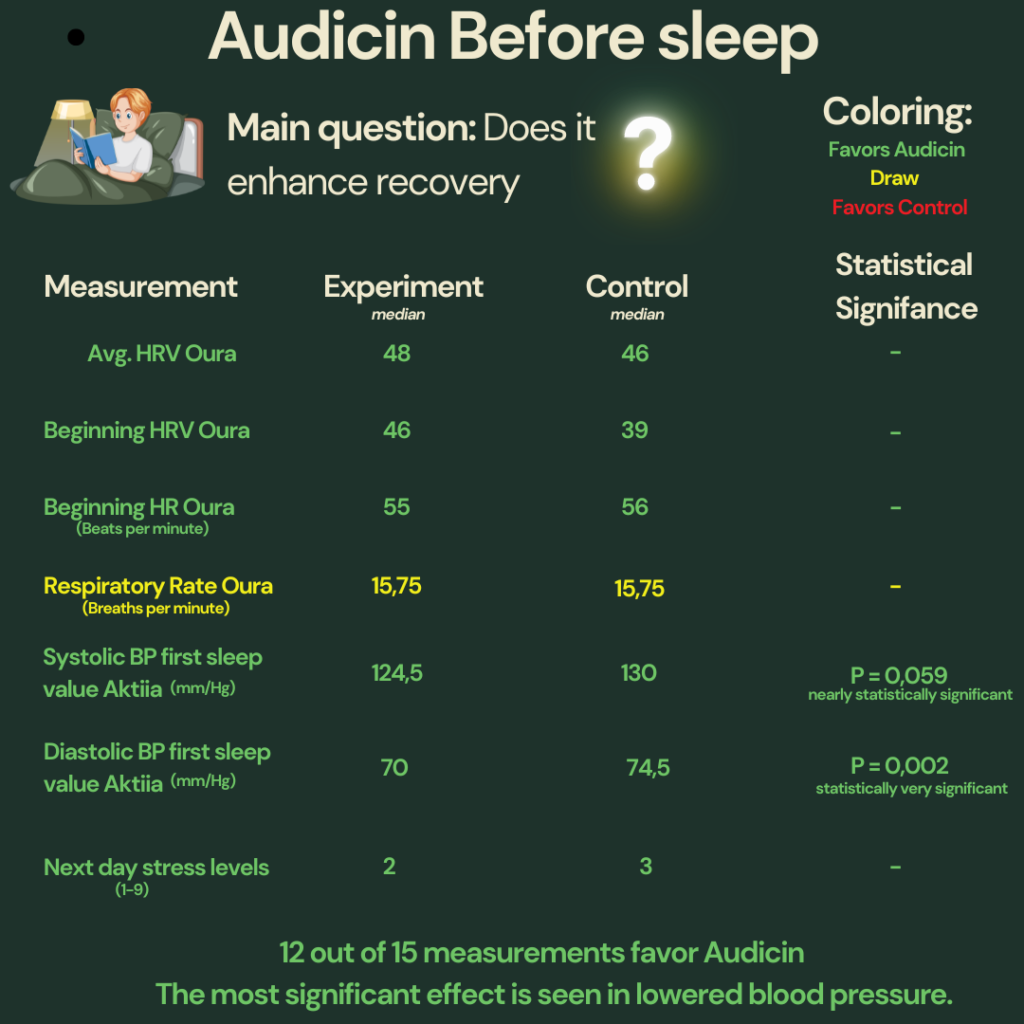
The control experiment had around 15 minutes more REM sleep, but the p-value was 0.89, meaning the difference is not considered statistically significant.
Overall, most of the metrics favored Audicin, although the differences were minimal except for blood pressure and deep sleep.
Here is an overview of the results for part two:
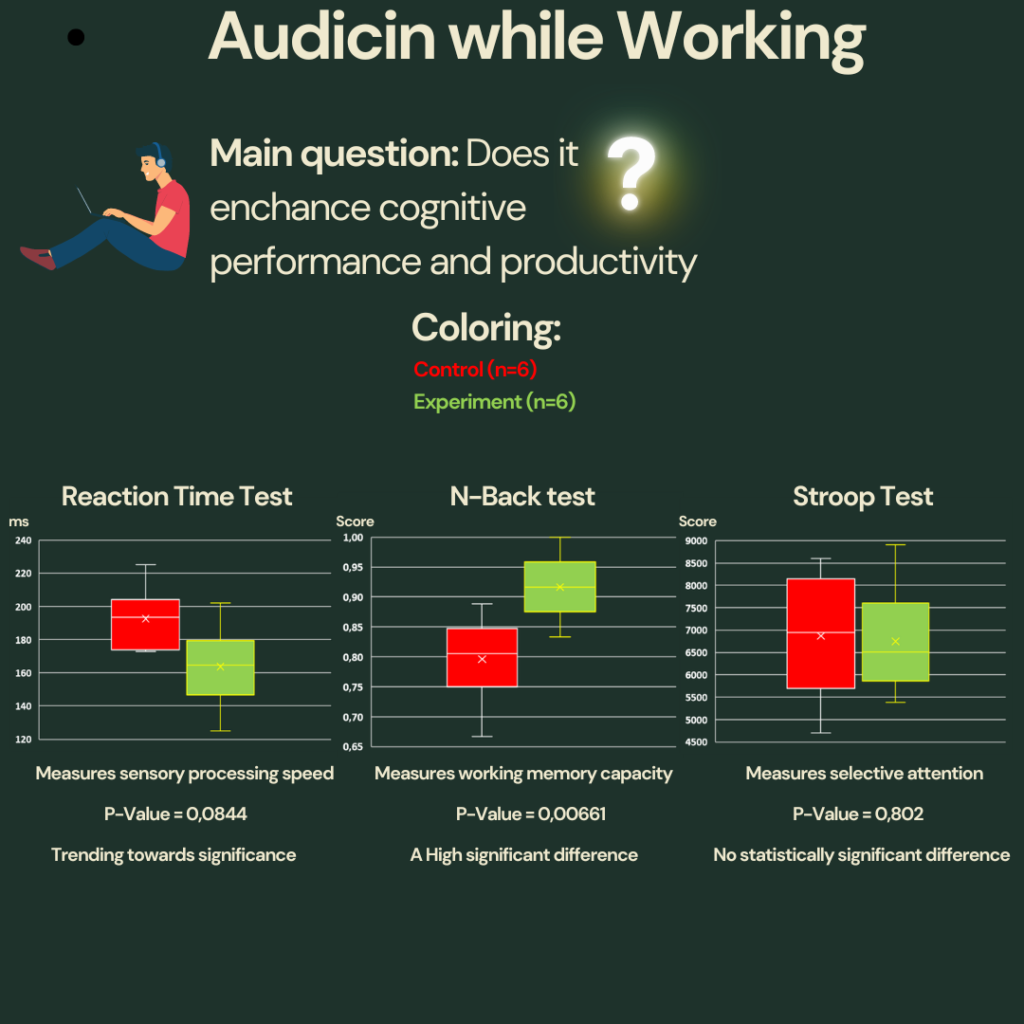
Interestingly, my N-back results were significantly better with Audicin. The N-Back test is related to working memory capacity.
However, there were no differences in the Stroop test results, which argues against a general placebo effect of Audicin on my performance.
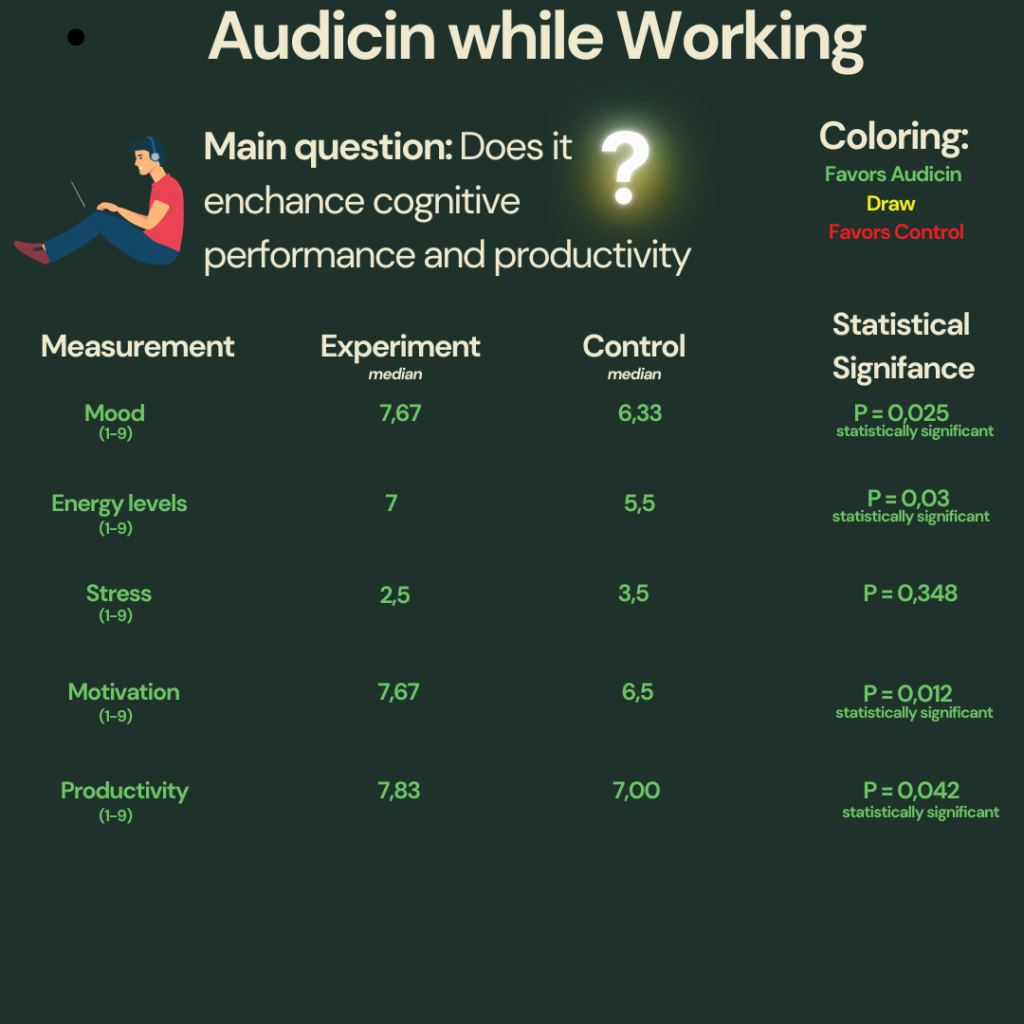
The subjective metrics above showed promising results, all favoring the Audicin week. However, it is important to acknowledge that other factors can also impact these numbers. Still, in the case of N=1, the results matter to me and encourage me to continue with Audicin.
3. Conclusion
If we think about the biohacking and wellness industry, it’s full of expensive devices and wearables, and sometimes, the science is questionable.
The good news is that many efficient protocols and interventions are free or with minimal cost.
I put binaural beats and Audicin into this category. Multiple meta-analyses shows benefits, its minimal cost and no extra time required.
ps. You can use code CLARITY to get Audicin free for one month (I don’t earn anything extra from this).

